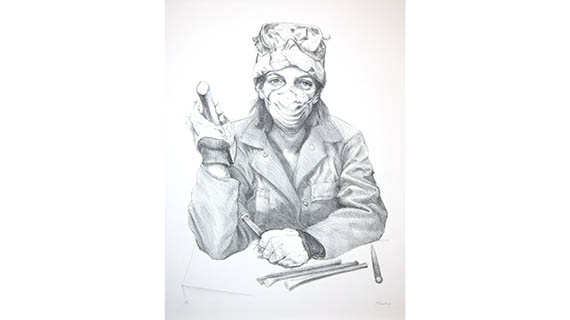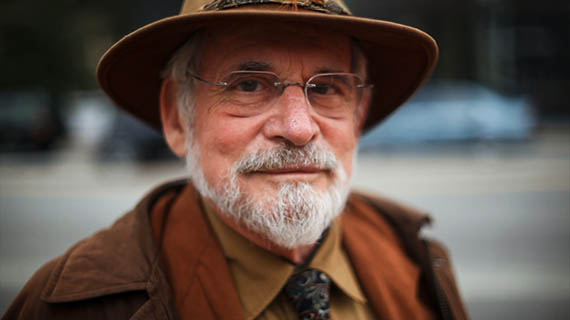Featured From SUMA’s Collection: Sigmund Abeles’ Sculptress
Posted: June 29, 2020 | Author: Southern Utah Museum of Art | Read Time: 3 minutes

During the rise of such movements as Land, Performance, and Feminist Art in the 1970’s, Sigmund Abeles chose to stick with a more candid and subtle approach to document the rapid shifts in America’s social environment. Similarly to the way artists had for generations, he chose to render real people, evoking an expressive story of the subject but with the addition of cognitive commentary.
Abeles’ Sculptress, is particularly relevant of this time because it could be seen as a visual response and outcome due to the mainstreaming of the Feminist Art movement. This piece disregards the predisposed subject matter which placed a woman solely as a desirable object within a piece. An idea sparked by Judy Chicago’s famous question, then essay “Why Have There Been No Greater Women Artists?” written by American Art historian Linda Nochlin in 1971. The woman in this piece shows little skin, covered from head to toe in protective gear and likely lots of dust. Not necessarily an object of desire, instead, a subject that stirs curiosity for what she does, makes, thinks, etc. As the title suggests, she is a sculptress by trade; The piece highlights an artists daily life, process, emotions, and story.
Sculptress is also strikingly reminiscent of our daily lives during the COVID-19 pandemic. As all of us try to protect ourselves and others by participating in the CDC’s suggested guidelines, we also as humans have the desperate need to find a balance between doing this and carrying on with some sort of recognizable daily life. Similar to this piece, imagery of our “essential workers” featured on all media platforms tell us a story of the individual and the current state of affairs through the identifiable protective gear and expressive facial features peeking out from behind it.
What do you see?
Look closely at Sigmund Abeles' work and use these questions to guide you. Share your thoughts if you’d like with your family, friends virtually and with SUMA in the comments on Facebook or Instagram.
With each piece Abeles creates he focuses on the subject's expressive features and state of being in that moment of their life.
- Which specific emotions do you think Abeles is trying to express in this piece?
- Can you imagine what she was thinking about at the time?
- Why did he choose this woman as his subject?
- What do you see that makes you think so?
- Who would you choose to feature to communicate this particular time in history, how you or others are feeling etc?
- What adjustments have you made to maintain daily life that you recognize? How does this help you and others?
 About the Artist Sigmund Abeles
About the Artist Sigmund Abeles
Sigmund Abeles was born 1934 in New York City and raised in South Carolina. His work deals with the expressive and psychological aspects of the figure; an art focused on the life cycle. Drawing informs all of his work. Abeles works in pastels, oils and the graphic media as well as sculpture. Currently Professor Emeritus from the University of New Hampshire, after 27 years of teaching, Abeles works full-time in his NYC and upstate NY studios. Recipient of numerous grants and awards, a National Academician; the work of Sigmund Abeles may be found in many public institutions including (among others) British Museum, Chicago Art Institute, Fogg Museum, Metropolitan Museum of Art, Museum of Fine Arts, Boston, Philadelphia Museum and Whitney Museum of American Art.
Produced by the Southern Utah Museum of Art
The Southern Utah Museum of Art, on the campus of SUU, features the artwork of regional artists known for their landscapes, faculty and student artists from the SUU Department of Art & Design, as well as emerging and distinguished artists from around the country.
This article was published more than 3 years ago and might contain outdated information or broken links. As a result, its accuracy cannot be guaranteed.

